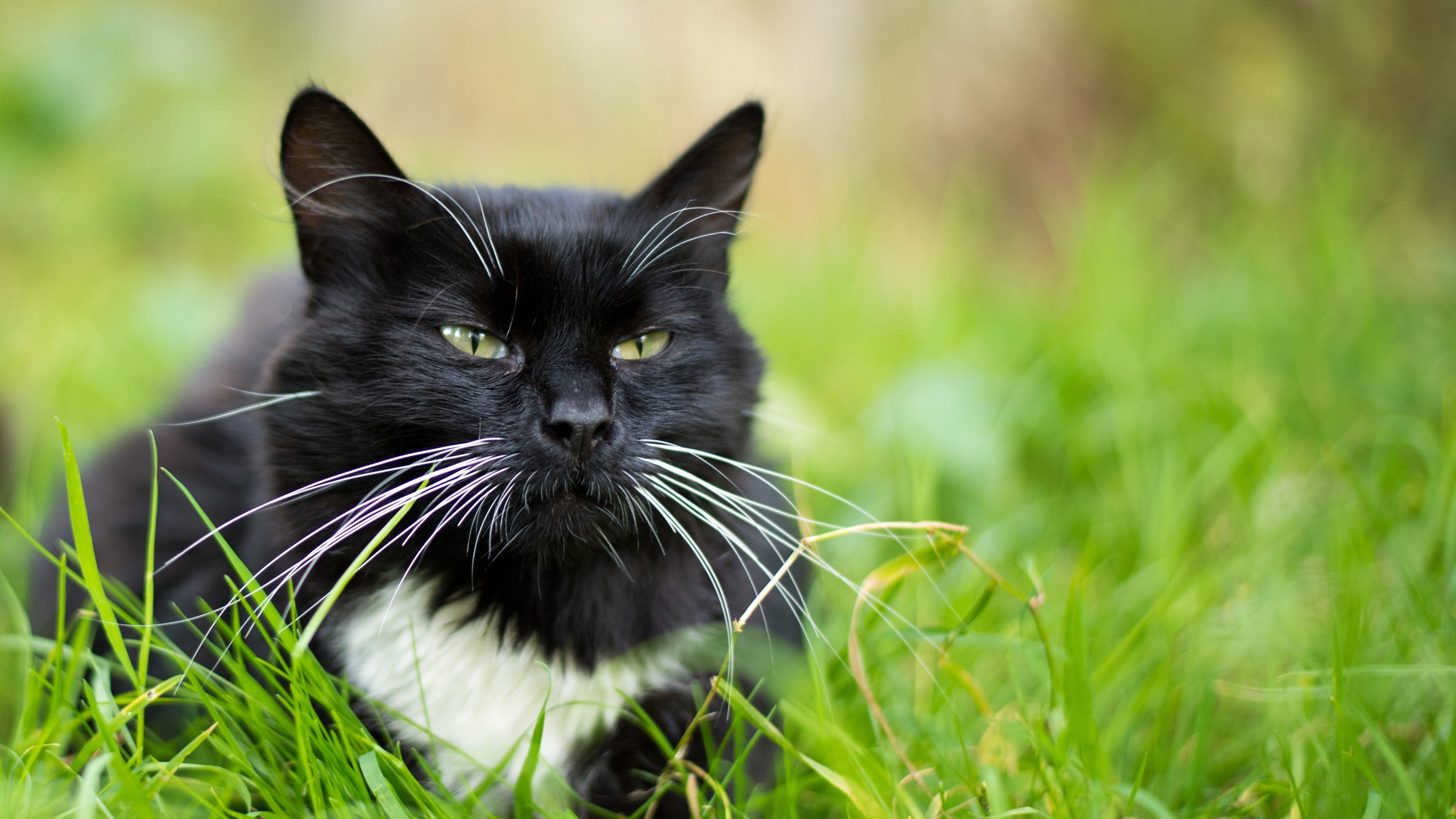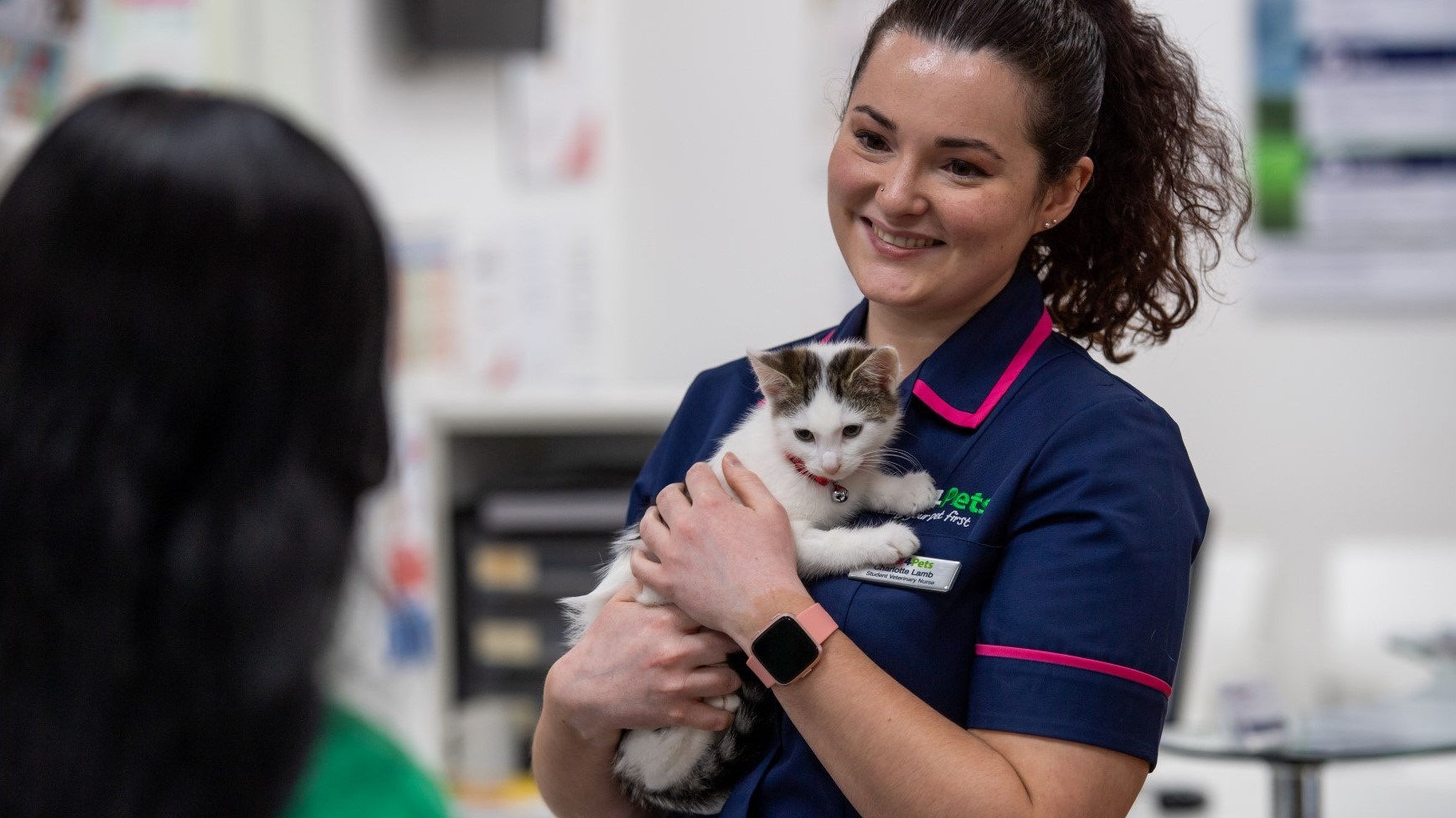
Mange in Cats
Mange is caused by microscopic mites which live on the skin of your cat, and can make them itchy, uncomfortable and looking less than their best. Keeping your cat mite-free will keep them feeling and looking great!
Did you know there are actually many species of mites? Small and spider-like, with four pairs of legs, mites are actually a group on their own, with the smallest examples being less than 0.1mm long!
Many mites are not parasites, and can actually be really helpful, for example as decomposers.
More about mites and mange in cats
Parasitic mites we might see on our cats include:
- Ear mites: Ear mites are mites that are specialised to live in our pets’ ears, and are known as Otodectes cynotis. These pesky parasites, which can cause itching and ear infections, are quite commonly seen in cats and are just visible to the human eye as tiny, white dots, although a microscope is usually needed for a diagnosis. Cats that have these ear mites will be itchy, have dark wax coming from their ears and their heads may shake. There may also be an unusual smell in the ears of affected cats. Cats can also, much more rarely, pick up a different type of mite called Notoedres which is intensely itchy, much like sarcoptic mange in behaviour, and often affects the edges of the ears and the face.
- Harvest mites: Harvest mites, 'chiggers', or grass mites, are seasonal parasites seen mainly in the autumn time – a habit which gives them their name Neotrombicula autumnalis. Harvest mites live in rural areas, and cats can easily pick up this parasite while out exploring, especially in chalky areas. It is the larval stages that actually affect our pets, and harvest mites on cats can be seen by the human eye as small red or bright orange dots which may cluster around the ears, head, feet or belly. Some cats seem to be affected by harvest mites more than others, with some becoming very itchy and others showing no signs at all. For itchy cats, this itching is usually concentrated mainly on the feet. Infestations, however, can often be spotted by looking in ‘henry’s pocket’ – the little fold of skin on the outside side of their ear! Harvest mites can also be seen in dogs and humans.
- Cheyletiella or walking dandruff mites: An infestation with cheyletiella is known as cheyletiellosis, fur mites, or ‘walking dandruff’, and is usually seen in long-haired cats. Cheyletiella mites are also seen on dogs and rabbits – although each have their own species of cheyletiella, cross-infection can also occur. Thankfully, a case of ‘walking dandruff’ usually has very mild or absent signs – mostly an infestation is seen as excessive dandruff or scurf and is easily treated, although some cats have been known to become very itchy.
- Sarcoptic mange (scabies): Sarcoptic mange, which is also known as scabies or fox mange, is cause by the mange mite Sarcoptic scabei. These mites can live on the skin of cats, although they are much more common in dogs. Sarcoptic mange is highly contagious, either by mites moving when animals are in direct contact, or via sharing contaminated items such as brushes and bedding – as this is usually a parasite of canines, most affected cats will have picked up the infection from living with an infected dog. Once the mange mites have infected a cat, they burrow into the top layer of the skin – as these mites burrow, they cannot be removed by brushing or bathing. Cats may not show many signs of having sarcoptic mange at first, but as the numbers grow they can get very itchy and may start to damage their skin by scratching and licking.
- Demodectic mange (demodecosis): Despite also being commonly called a mange mite too, demodex mites are very different from the other mange mite which causes sarcoptic mange. Uncommon to rare in cats, the demodex mites live within the hair follicles, rather than burrowing, and can be difficult to diagnose. In cats there are two species of demodex – the most common, Demodex cati, are normal residents of cat skin, and only ever cause problems if they overgrow – unusual in a healthy, adult cat. The second species, Demodex gatoi, are much rarer but can be transmitted between cats and can cause intense itching. A demodex infestation can happen on any cat with an overgrowth of the parasites, but is much more common in young cats or those with a poor immune system, such as cats with FIV, diabetes or Feline Leukaemia Virus.
Mites are found across the UK, and cats can easily pick up mites from the environment, from other cats and from other household pets such as dogs. While there is some seasonal variety – harvest mites for example are seen in autumn – mites are present throughout the year and exposure to mites is impossible to completely prevent.
Signs of a mite infection will alter depending on the mite in question, but there are some signs that might point to mites as a potential problem:
- Itching
- Excessive licking of any area
- Patches of hair loss
- Head shaking
- Excessive ear wax
- Flaky skin
If your cat is experiencing any of these signs then make an appointment with your local Vets4Pets vet as soon as possible.
Thankfully, although you can’t stop your cat being exposed to mites, you can prevent an infestation developing by:
- Regular anti-parasite treatments. These treatments usually come in the form of spot-ons, and may manage a range of parasites including mites. The best parasite protocol for your cat will depend on you, your cat, your lifestyle and even the season, and your vet can help you decide which regime works best for you. However you choose to manage parasites in your cat, make sure to speak to a vet about the best anti-parasitics on offer, as many over the counter treatments have poor efficacy.
- Considering all pets. As mites can often be transmitted between species, it is important to consider parasite protection for all the pets in the household.
- Monitoring. If you see any changes in your cat’s hair coat, skin or behaviour, always get them checked over by a vet who will be able to help control any mite infestation.
- Grooming. Regular grooming, especially of long-haired cats, can help identify any changes in your cat’s skin early, which will help with effective and rapid treatment.
If you think your cat might have a mite infection, the best thing to do is to go to your vet. They can do a full physical examination, and check your cat over from nose to tail! If there is a risk your cat may have mites, your vet will prescribe a treatment suitable for your pet, which should eliminate the mites. They can also help you plan a parasite prevention plan going forward too, to make sure your cat stays protected.
If there is any doubt, your vet may recommend skin tests. These will look for the mites themselves, which are often invisible or barely visible to the human eye. These tests can include skin scrapes, which involve making a small graze on your cat’s skin – this is necessary to diagnose deep parasites such as demodex, and while a little uncomfortable is an important part of getting the right treatment for your cat.
Sadly, although mites may prefer one species over another, some will also infect humans if they are in close enough contact. The most common of these is the sarcoptic mange mite, which is very contagious, and highly itchy.
If you think you may have been exposed to mites, always contact your doctor for advice.
Health Plans to keep your cat healthy
At Vets4Pets we offer a range of Health Plans that make essential routine treatments more affordable. You'll save money on things like annual vaccinations, flea and worm treatment and routine health check-ups.

Cat Advice
Read more of our expert cat advice to keep your cat happy and healthy.
